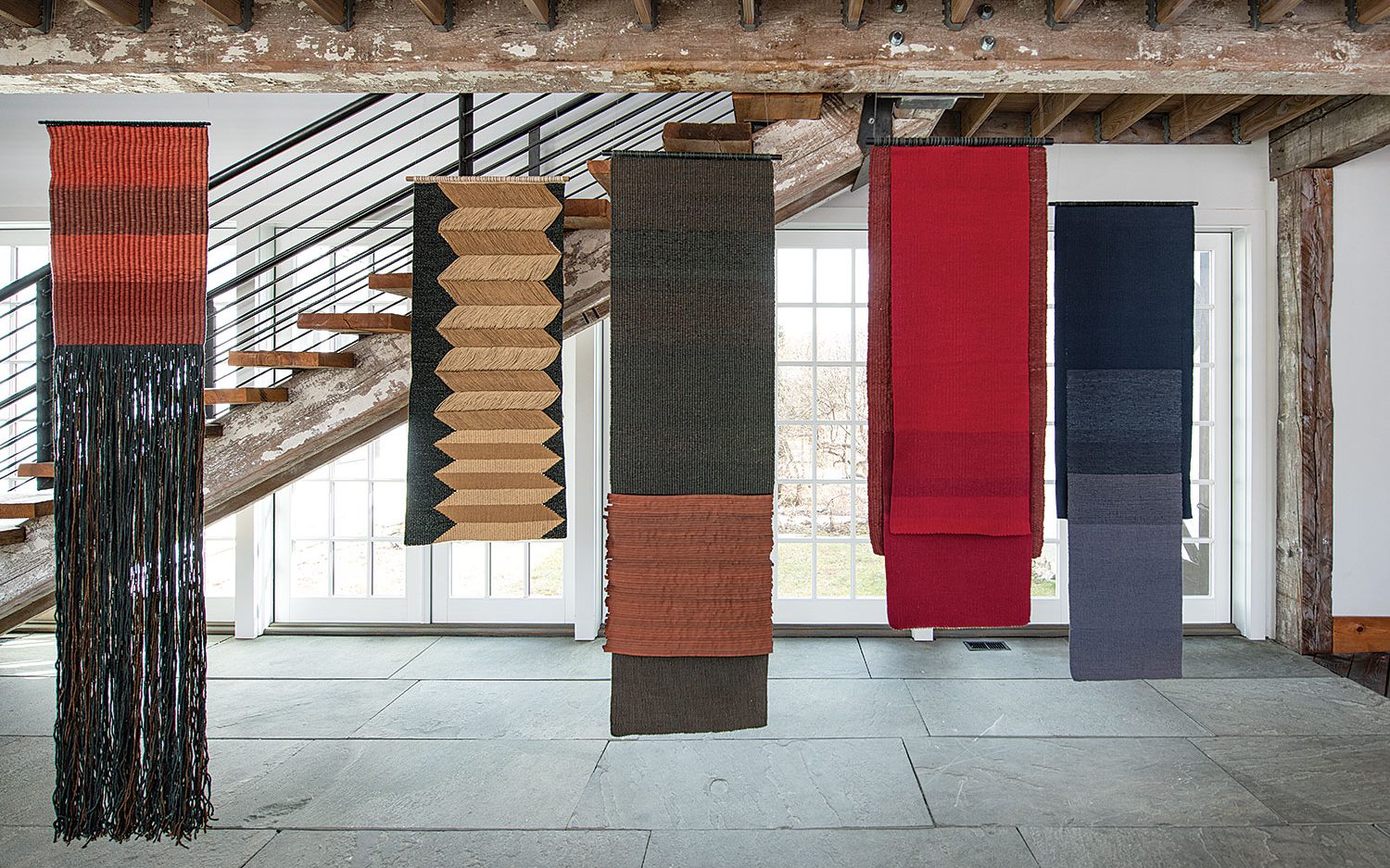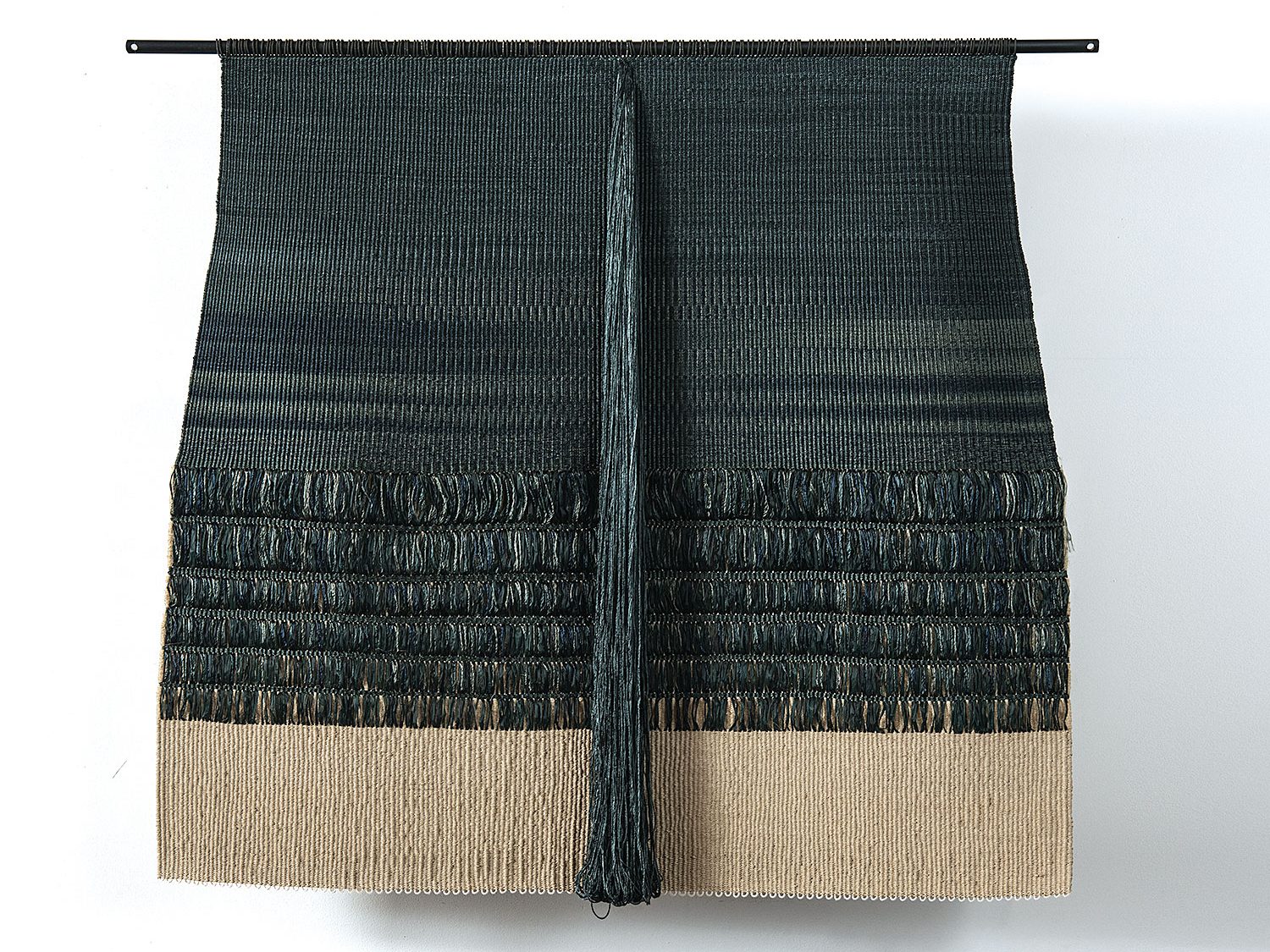
Strength and refinement are words used by those who review or just experience Carolina Yrarrázaval’s elegant tapestries. For a 2003 solo exhibition at the Chilean Museum of Fine Art in Santiago, Sheila Hicks wrote of her works: “Somber steps/weaving dignity/without digression/relentless ascent/rigorous denial/without shame.” Yrarrázaval’s work features a formal and chromatic purity, achieved through the use of colors achieved through a personal dyeing process.

There are multiple influences reflected in Yrarrázaval’s work. A solo exhibition, Capas de Recuerdos, at the Centro Cultural Las Condes in 2019, was entitled Layer of Memories, reflecting the layers of weaving, years of research and volumes of textures that feature in her work. Yrarrázaval draws on different manifestations and cultures, from pre-Hispanic geometry to the subtlety and mystery of Japanese textiles.

For example, she lives on the Chilean coast and that environment infuses her work, which features blue greens, wavy lines and iridescent threads that reflect the colors of the beach and lines of the ocean and the horizon. She has traveled to India and Japan and cites costumes she saw there as another influence, evident in deep reds and indigos. She works in linen, jute, cotton, silk, raffia and hemp.

Traditional textiles are still another source of influence for Yrarrázaval. “Throughout my entire artistic career I have devoted myself to investigating traditional textile techniques from diverse cultures, especially Pre-Columbian techniques, trying to adapt them to my creative needs. Abstraction has always been present as an aesthetic aim, informing my choice of materials, forms, textures and colors. The simple proportions are guided by an intuitive sense that avoids the use of mathematical formulas.”
